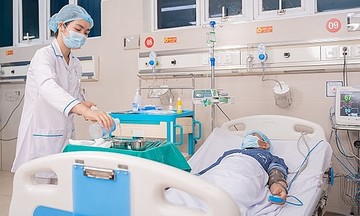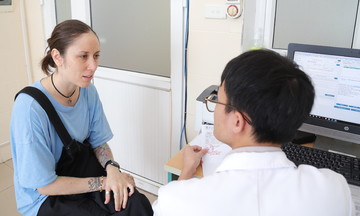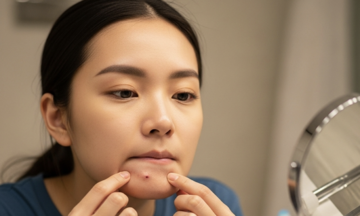A week prior, Vinh experienced back pain and a sharp, stabbing sensation in his chest. Assuming it was from sitting too long at work, he applied salonpas patches. Two days later, red patches appeared, followed by blisters. Finding them uncomfortable, Vinh punctured them, causing the rash to spread. The pain kept him awake all night, exacerbated by the friction of his clothing, forcing him to cancel a client meeting.
At the dermatology clinic, Vinh was diagnosed with shingles and contact dermatitis. He received antiviral medication, anti-inflammatory cream, and advice to rest and get vaccinated to prevent recurrence.
Realizing the seriousness of his condition, Vinh reduced his workload and increased his rest time, incorporating leisure activities on weekends. He cut his 12-hour workdays, which he had maintained even when sick or feverish, down to 9 hours, combined with proper diet and rest.
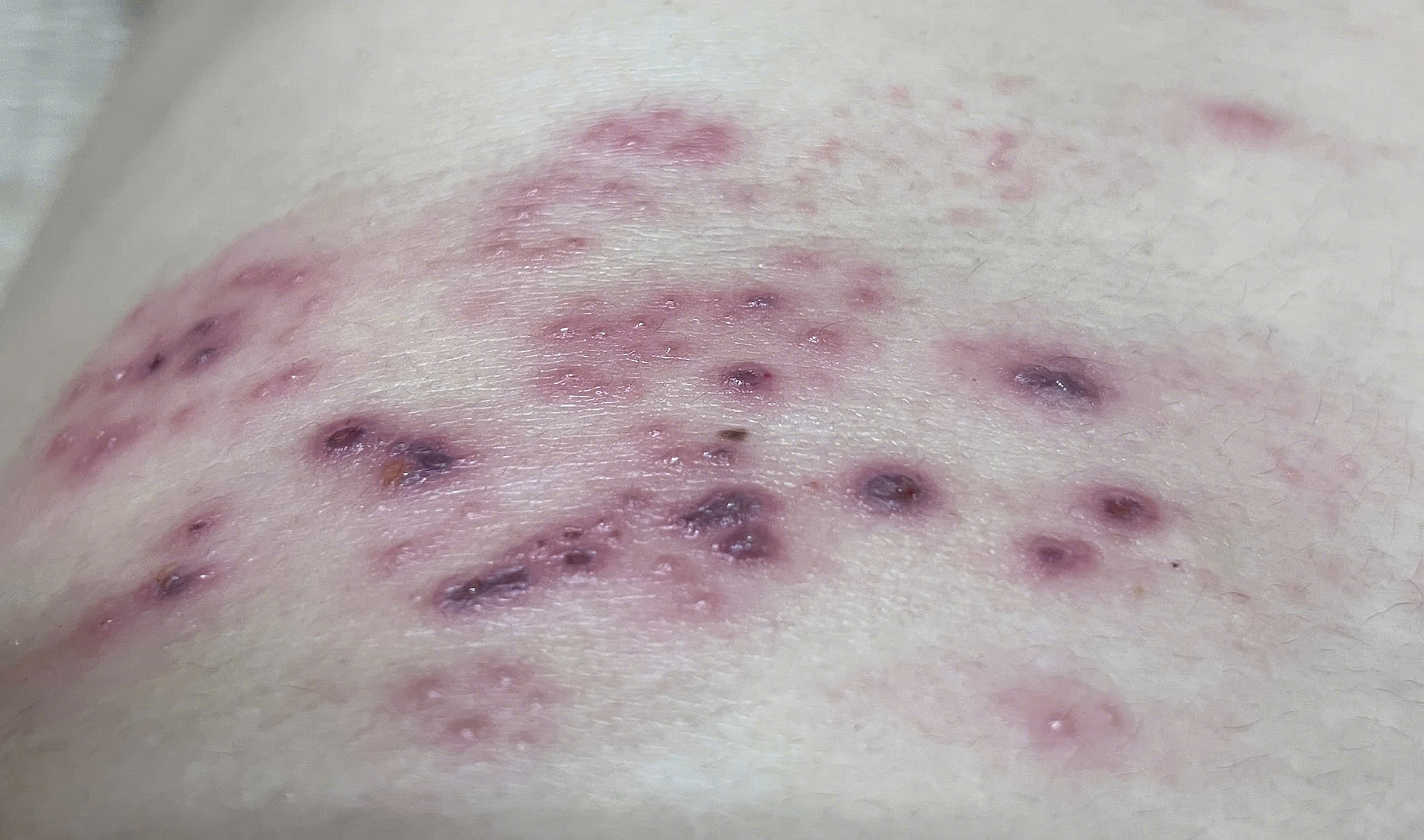 |
Shingles blisters on Thanh Vinh's chest. Photo: Provided by the subject. |
Similarly, 24-year-old Thanh Thuy, a communications professional at a prominent Hanoi bank, pushed herself to handle all tasks in an effort to prove her competence. She regularly worked past midnight, attended events on weekends, and neglected her meals and sleep. After 4 months, she began experiencing headaches, nausea, anxiety, and heart palpitations. By the 6th month, she developed painful and unsightly shingles around her eye.
While receiving treatment for shingles, Thuy was advised to seek psychological counseling. She was diagnosed with burnout syndrome and advised to reorganize her workload and prioritize rest.
Burnout, recognized by the World Health Organization (WHO) in 2019, is a syndrome characterized by prolonged physical and emotional exhaustion caused by workplace stress, pessimism, and self-doubt, leading to reduced productivity. In the US, a 2024 Eagle Hill Consulting report indicated that 45% of office workers experience burnout, with younger generations disproportionately affected: 54% of Generation Z and 52% of millennials.
Shingles is closely linked to stress. Doctor Huynh Tran An Khuong, Medical Manager at VNVC Vaccination System, explains that deadlines, coupled with the challenges young people face in balancing work and personal life, can trigger shingles earlier than the typical onset after age 50. Chronic stress, like burnout, can lead to physical ailments such as chronic insomnia, increased risk of cardiovascular disease, hypertension, and hormonal imbalances, creating a favorable environment for the varicella-zoster virus, which causes shingles, to reactivate.
A 2021 study published in the British Journal of Dermatology, which tracked over 77,000 people aged 40 and above in Denmark, found a correlation between high daily stress levels and increased risk of shingles.
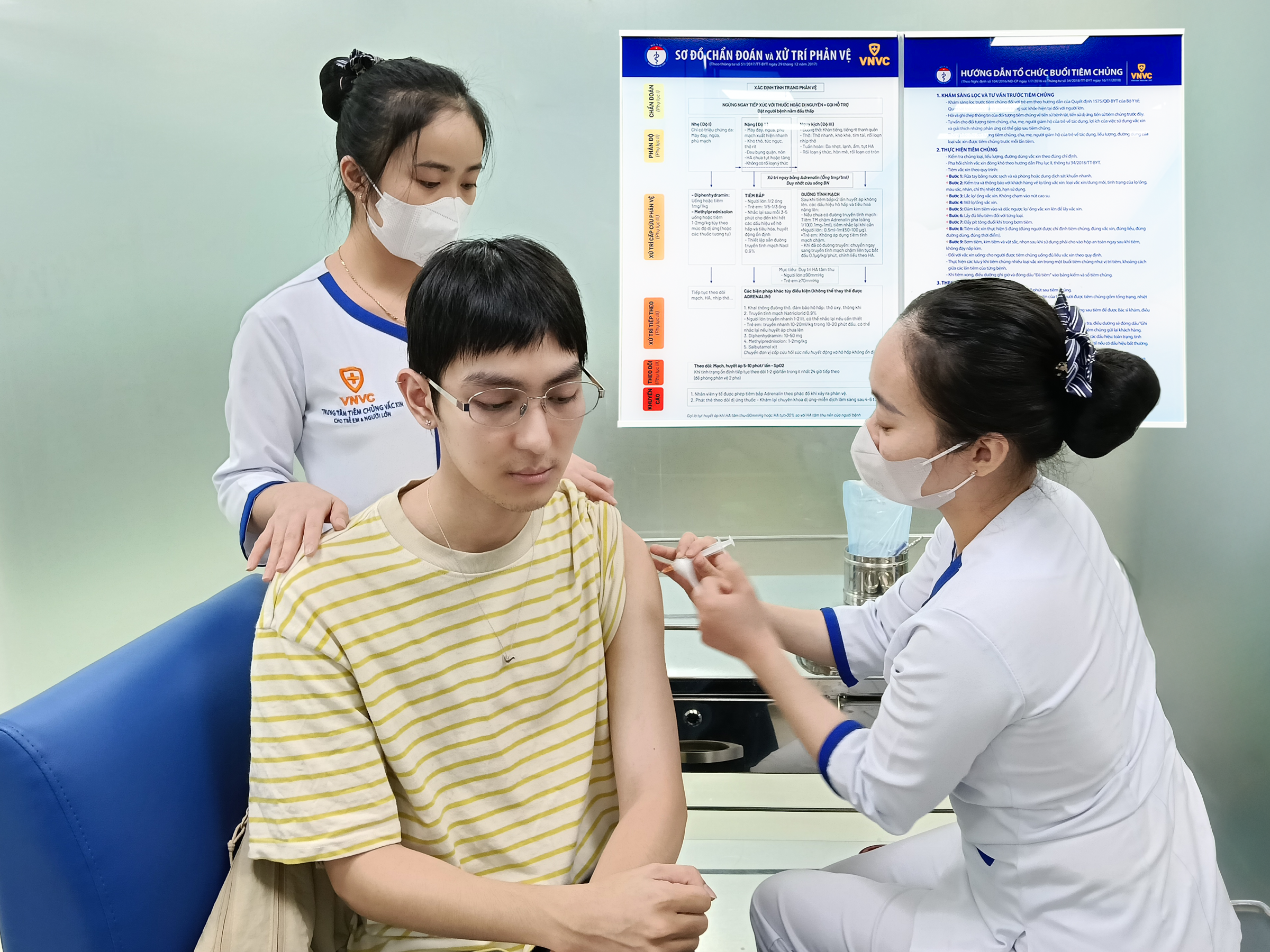 |
Young people getting vaccinated at VNVC Vaccination System for proactive disease prevention. Photo: Khanh Hoa |
For prevention, Doctor Khuong advises workers, especially young people, to strive for work-life balance and avoid excessive self-imposed pressure. He recommends maintaining a regular sleep schedule, avoiding work during designated sleep hours, and incorporating exercise and relaxation techniques like yoga and meditation. Vaccination is a proactive measure to strengthen the body's defenses against viral and bacterial threats.
Vietnam currently offers a two-dose shingles vaccine, administered 1-2 months apart as directed by a physician. The vaccine is available for those aged 50 and above, and for those aged 18 and above at high risk of shingles due to weakened immune systems or immunosuppressant medication.
When fully vaccinated, the vaccine is over 97% effective in preventing shingles in people aged 50 and above and up to 87% effective for those aged 18 and above. It also reduces the risk of postherpetic neuralgia (nerve pain following shingles) and other complications by over 90%. Regularly reviewing and updating one's vaccination records is also recommended.
Hoang Duong
*Names have been changed.




